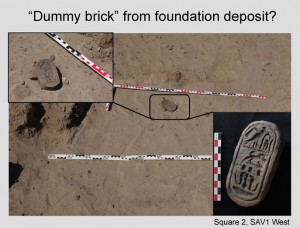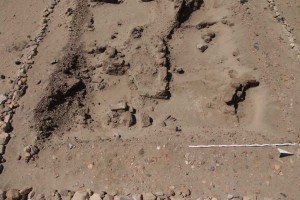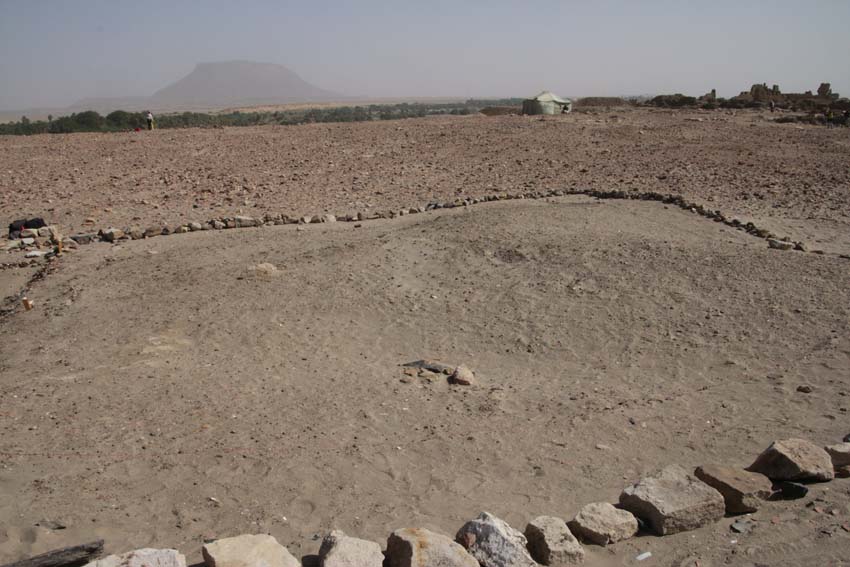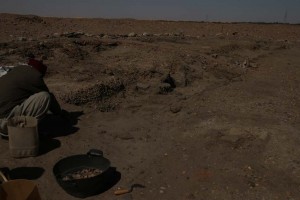The highlight among the finds from the 2014 season, recently presented in Sokar 28 (Budka 2014), is for sure SAV1W 532: A mud object of oval shape, representing a cartouche (11.4 x 6.1 x 3.4 cm). This oval plaque bears incised hieroglyphs on the front, giving, as it seems, the name and epithet of a god. The deity is a falcon-god, possibly Horus, Horakhty or even Hauron – the group of signs in front of the god, most likely an epithet, is unfortunately still unclear to me. The other signs might be read in a very playful writing as “Lord of the Thrones of the Two Lands, numerous in beauty”. “Lord of the Thrones of the Two Lands” is a well-known epithet for Amun, Amun-Ra and Horakhty.

The find spot of SAV1W 532 in square 2, SAV1 West.
SAV1W 532 with its incised hieroglyphic cartouche reminds one of the stamped bricks attested from the early 18th Dynasty onwards. However, it held most probably a symbolic character. It was found in the sandy pit cutting the enclosure wall in Square 2 at SAV1 West – it is possible that it once belonged to a foundation deposit for the town enclosure. Comparable cartouche-shaped plaques are regularly found in foundation deposits in Egypt, but most often in other materials (faience or stone) and smaller in size. According to Weinstein (1973, 94), cartouche-shaped plaques are new additions to foundation deposits in the mid 18th Dynasty (Thutmose IV/Amenhotep III). This could be of significance for the possible connection of SAV1W 532 with the town enclosure and its dating – at present, all is in favour to date the foundation of this wall as not prior to the reign of Thutmose III.
The only foundation deposits attested in Upper Nubia for town walls have been found at Sesebi (Thill 1997, 115 with further references) – at Sai itself, several deposits came to light in the foundations of Temple A.
SAV1W 532 finds a close parallel in the fragmented piece SAV1W 031, also from the sandy area in Square 2, and of comparable cartouche shape with incised hieroglyphic signs. Further exploration of the area in the upcoming season might allow us to contextualize these intriguing finds and to date them more accurately.

Overview of eastern part of Square 2 with remains of the town enclosure wall.
References
Budka 2014 = J. Budka, Neues zur Tempelstadt der 18. Dynastie auf Sai Island (Nordsudan) – Ergebnisse der Feldkampagne 2014, Sokar 28, 2014, 28–37.
Thill 1997 = F. Thill, Les premiers dépôts de fondation de Saï, Cahiers de Recherches de l’Institut de Papyrologie et d’Égyptologie de Lille 17/2, 1997, 105–117.
Weinstein 1973 = J. Weinstein, Foundation deposits in Ancient Egypt, Dissertation, University of Pennsylvania 1973.





